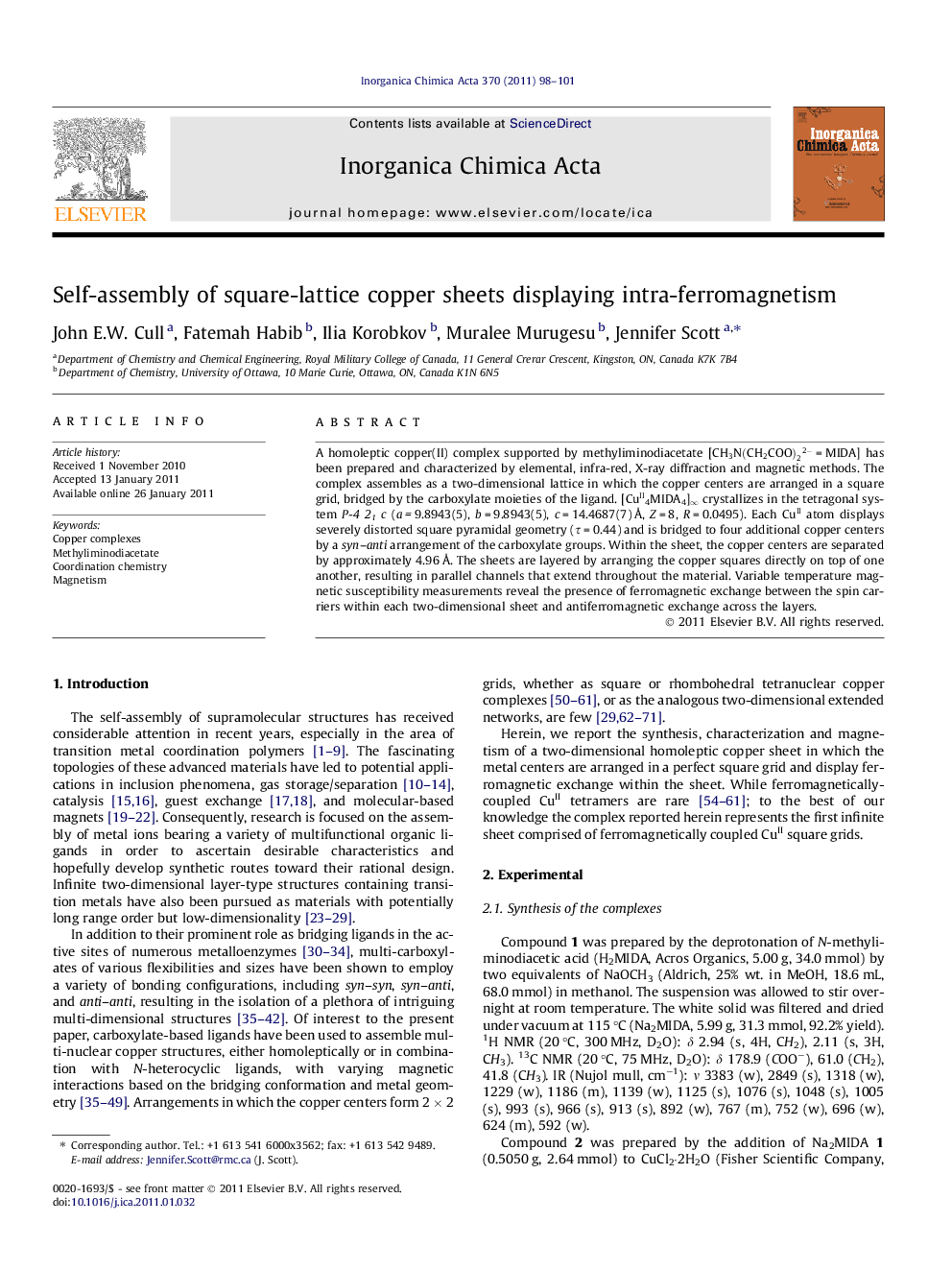| Article ID | Journal | Published Year | Pages | File Type |
|---|---|---|---|---|
| 1306264 | Inorganica Chimica Acta | 2011 | 4 Pages |
A homoleptic copper(II) complex supported by methyliminodiacetate [CH3N(CH2COO)22- = MIDA] has been prepared and characterized by elemental, infra-red, X-ray diffraction and magnetic methods. The complex assembles as a two-dimensional lattice in which the copper centers are arranged in a square grid, bridged by the carboxylate moieties of the ligand. [CuII4MIDA4]∞ crystallizes in the tetragonal system P-4 21 c (a = 9.8943(5), b = 9.8943(5), c = 14.4687(7) Å, Z = 8, R = 0.0495). Each CuII atom displays severely distorted square pyramidal geometry (τ = 0.44) and is bridged to four additional copper centers by a syn–anti arrangement of the carboxylate groups. Within the sheet, the copper centers are separated by approximately 4.96 Å. The sheets are layered by arranging the copper squares directly on top of one another, resulting in parallel channels that extend throughout the material. Variable temperature magnetic susceptibility measurements reveal the presence of ferromagnetic exchange between the spin carriers within each two-dimensional sheet and antiferromagnetic exchange across the layers.
Graphical abstractThe bridging methyliminodiacetate ligand has been used to assemble a two-dimensional copper extended network in which the copper centers are arranged in a perfect square lattice. Magnetism studies reveal dominant ferromagnetic interactions between the copper centers within a layer, and antiferromagnetic interactions between the layers.Figure optionsDownload full-size imageDownload as PowerPoint slideResearch highlights► Complexation of methyliminodiacetate to CuII assembles 2D sheets. ► Cu centers are arranged in a perfect square lattice. ► Ferromagnetic interactions within the sheet. ► Antiferromagnetic interactions between layers.
